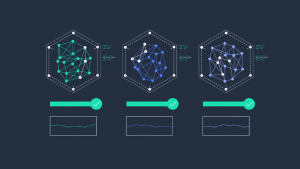Big Money Data: Three New Ways Finance is Using Big Data
![]() The emergence of big data cannot be underestimated. Big data is becoming more important in just about every industry, but perhaps none more so than in the arena of finance. Banks, lenders, Wall Street firms and even department stores are fast embracing this new reality. In today’s Big Money Data series, we take a look at three ways in which big data is being used in finance.
The emergence of big data cannot be underestimated. Big data is becoming more important in just about every industry, but perhaps none more so than in the arena of finance. Banks, lenders, Wall Street firms and even department stores are fast embracing this new reality. In today’s Big Money Data series, we take a look at three ways in which big data is being used in finance.
Customer Intimacy
As expected, banks are at the forefront of efforts to apply big data to the financial sector, but not always in the way we might think. While most banks use big data to help with number crunching to at least some degree, one of the leading banks in Australia is finding it helpful in their attempts to become more ‘intimate’ with their customers.
ANZ Bank’s Leslie Howatt, chief of technology, explains this way of thinking:
“One of the big shifts for us is the sale side of relationship management. Our customers expect us to turn up fully understanding everything about their business, and with a value proposition for them that’s already tailored, before you walk in the door.”
One of the advantages banks have is that – being the place where their customers bank – they automatically have access to a wealth of data on their customer’s finances. So, to meet their customer’s expectations, ANZ now employs a team of big data analysts to study every aspect of their finances, including both their businesses’ expenditure and their personal outgoings, using a combination of analytics products and services, and of course, smart people.
“It’s exceptionally important, I think, particularly for customer intimacy,” explained Howatt.
![]()
![]()
See the entire Big Money Data Series on Pinterest and Springpad!
.
Credit for the poor
![]() ZestCash was a finance company that originally specialized in providing loans to those with poor credit ratings. Rather than use the tried and tested formula applied by major banks to credit applications ZestCash would perform their own complex data analysis to better understand an applicant’s credit quality.
ZestCash was a finance company that originally specialized in providing loans to those with poor credit ratings. Rather than use the tried and tested formula applied by major banks to credit applications ZestCash would perform their own complex data analysis to better understand an applicant’s credit quality.
“Our mission was to use big data to save the under-banked billions of dollars in high fees”, explained Douglas Merrill, co-founder of ZestCash.
ZestCash’s theory was that, while some people are indeed risky bets for a loan, many are not, having a history of paying off loans and credits, or long-term employment, yet for one reason or another are unable to secure credit.
The idea has proven to be popular, to the point that ZestCash has stopped providing loans altogether. Now, renamed ZestFinance, it’s selling its credit analysis service to bigger banks instead. The company has already licensed its technology to the subprime lender Spotloan, and claims it is in discussions with several credit card companies.
“We think that will work better if we get our technology into the hands of established providers,” said Merrill of the new developments.
Pricing Goods
Ever noticed how certain items may cost more in one part of the country than another? Regional pricing isn’t a new concept among big retail chains, but it may be about to get more noticeable, particularly now that Sears is using big data to set its prices.
To do so, Sears has employed Hadoop open source software to correlate huge quantities of information on everything from product availability to prices for specific products in competitor stores, and even information about local economic conditions. Sears can then crunch all of that data to come up with the most appropriate price for each product it sells, in each of its stores, nationwide.
Sears points out that with the threat of e-commerce, physical retail stores are now under more pressure than ever to get their pricing just right. Set prices too high and sales will be low, but set those prices too low and margins are squeezed.
Phil Shelley, CTO of Sears Holding Company, explains: “You can actually become pretty accurate at calculating the price elasticity of where you are compared to competitors and it makes a big difference to the margins and the sales of the company.”
A message from John Furrier, co-founder of SiliconANGLE:
Your vote of support is important to us and it helps us keep the content FREE.
One click below supports our mission to provide free, deep, and relevant content.
Join our community on YouTube
Join the community that includes more than 15,000 #CubeAlumni experts, including Amazon.com CEO Andy Jassy, Dell Technologies founder and CEO Michael Dell, Intel CEO Pat Gelsinger, and many more luminaries and experts.
THANK YOU













